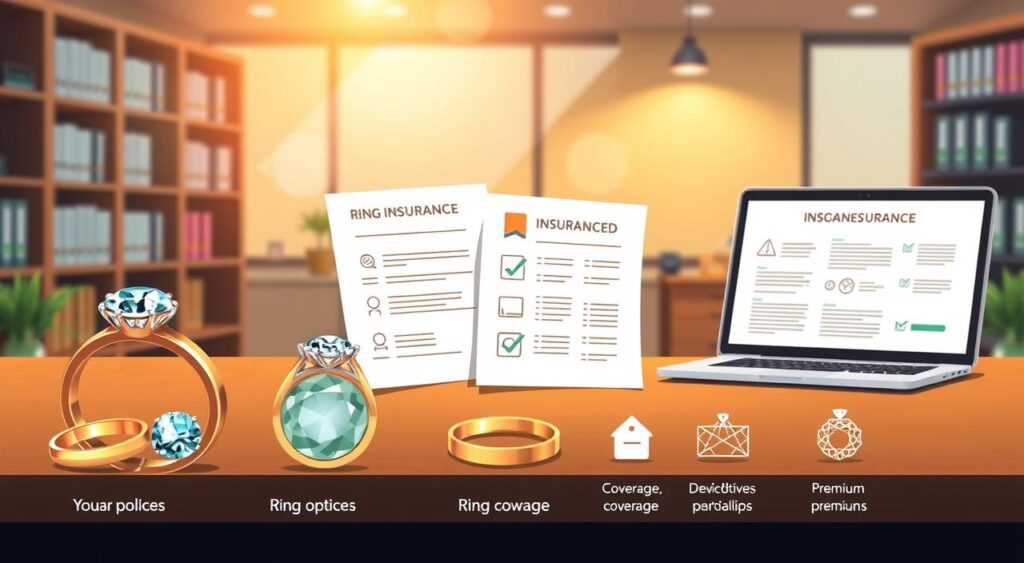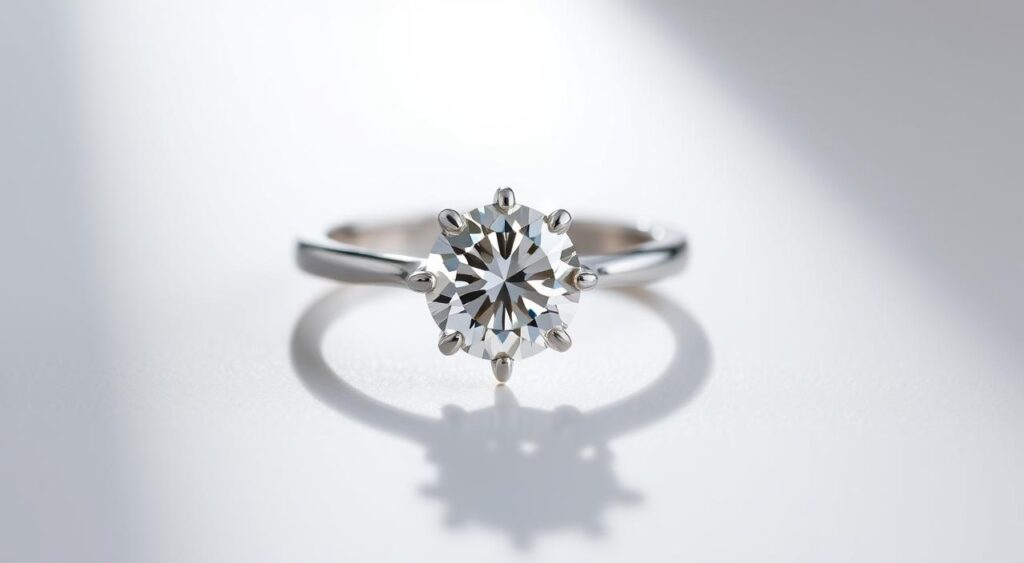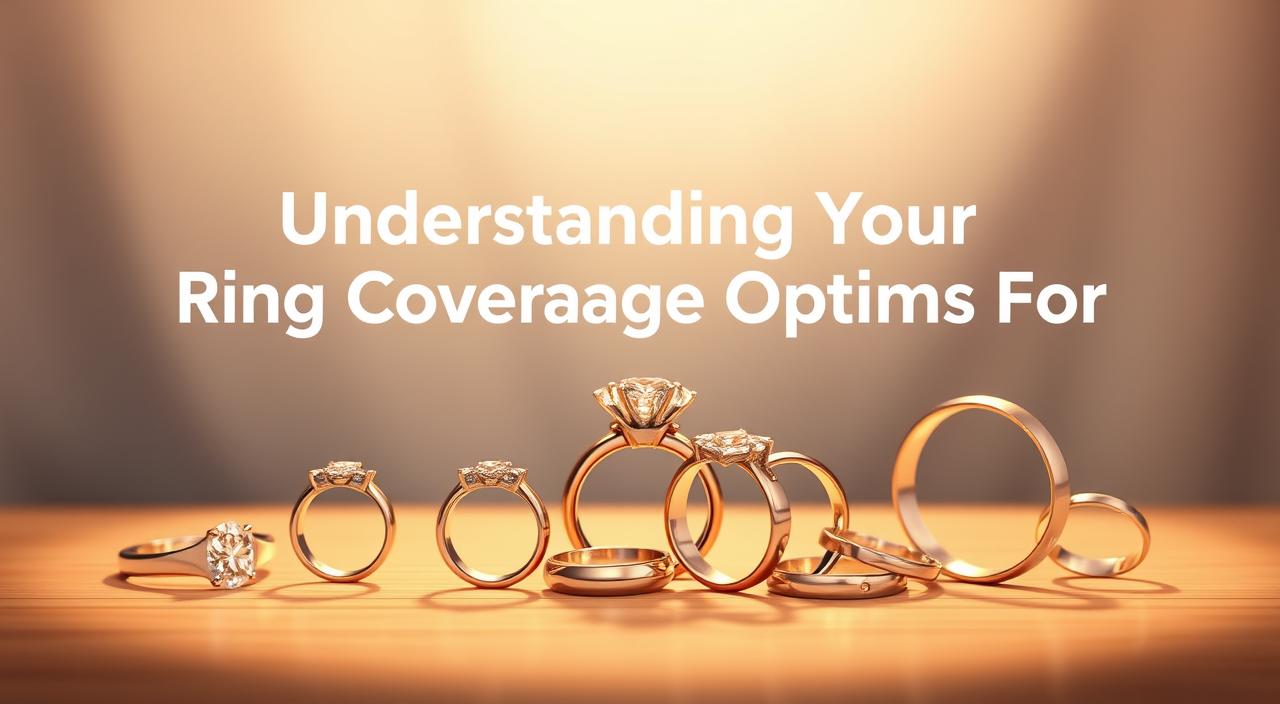When it comes to our jewelry, particularly rings, the emotional significance often outweighs their monetary value. This is why understanding ring coverage options is essential for us as we seek to protect these cherished items. In this article, we will delve into various insurance plans that cater specifically to ring protection, including specialized jewelry insurance and jewelry riders. By exploring the available coverage options, we will be better equipped to safeguard our investments and ensure peace of mind.
Key Takeaways
- Understanding the importance of protecting our rings through appropriate insurance.
- Different types of coverage options tailored for rings exist within the market.
- Jewelry insurance can vary significantly based on individual needs and preferences.
- Evaluating our ring’s value is crucial to selecting the right policy.
- Factors such as lifestyle can influence our choice of coverage.
- Being aware of policy exclusions and limitations will help avoid surprises in times of need.
Introduction to Ring Coverage
Understanding ring coverage is essential for anyone who owns valuable jewelry. This type of coverage includes various insurance policies specifically designed to protect our rings against loss, theft, or damage. We recognize that jewelry protection is not just a matter of keeping our items safe; it can also provide peace of mind knowing that we have safeguards in place. Exploring the insurance basics surrounding ring coverage enables us to appreciate the inherent risks associated with wearing and owning precious rings.
Many factors contribute to the necessity of ring coverage. Accidental loss, theft while out, or damage due to daily wear can happen to anyone. By obtaining appropriate coverage, we can ensure that our cherished possessions are adequately protected. Insurance policies tailored for jewelry can help replace lost items or restore them to their original condition, thus emphasizing the value of jewelry protection in our lives.
Why You Need Ring Insurance
Securing ring insurance illustrates the importance of ring insurance for safeguarding our valuable jewelry. Rings encounter various risks, ranging from daily wear and tear to unexpected accidents. Without appropriate protection, we can face significant financial setbacks if our rings are lost or damaged.
Statistically, jewelry theft and loss are all too common. According to recent studies, millions of dollars worth of jewelry are stolen each year in the United States alone. This reality highlights the need for loss prevention strategies that include securing ring insurance. Such policies not only cover theft but can also provide compensation in case of accidental damage.
By investing in ring insurance, we gain peace of mind knowing our precious items are protected. This coverage helps us enjoy our jewelry without constant worry about potential loss or damage. The emotional and financial security provided by ring insurance is a prudent choice that allows us to cherish our rings fully.
Types of Ring Coverage Options
When searching for the right coverage for our rings, we discover a variety of options available. Understanding the distinctions between homeowners insurance and specialized ring insurance is crucial. The latter often provides enhanced protection for valuable items. Furthermore, jewelry riders and standalone policies present alternative approaches to safeguarding our cherished pieces.
Homeowners Insurance vs. Specialized Ring Insurance
Homeowners insurance typically covers personal property within the home, including some jewelry. This coverage often comes with limitations, particularly in terms of the total amount available for valuables like rings. In contrast, specialized ring insurance delivers targeted protection. This type of policy is specifically designed for high-value items, offering more comprehensive coverage and fewer restrictions. For us, it’s important to evaluate our individual needs and understand which option provides the best level of protection for our rings.
Jewelry Riders: What Are They?
Jewelry riders serve as an additional layer of coverage added to our existing homeowners insurance. These riders extend coverage specifically for jewelry, ensuring higher limits and broader protection against loss, theft, or damage. While they may add an extra cost to our premiums, their value lies in providing peace of mind knowing that our valuable rings receive specialized attention within a broader policy.
Standalone Policies: Pros and Cons
Standalone policies are tailored specifically for jewelry, including rings. One significant advantage is that they often cover the full value of the item without discriminatory limits. This ensures that we are adequately protected if a loss occurs. Conversely, these policies can come with higher premiums, making them a less attractive option for some homeowners. Knowing the pros and cons enables us to make an informed decision that best meets our insurance needs.

Evaluating the Value of Your Rings
Understanding the value of our rings is essential before we look into insurance options. A precise ring appraisal can provide us with the necessary insights into the worth of our jewelry. This assessment often influences the selection of our insurance coverage and ensures that we are adequately protected. A professional appraisal evaluates factors such as design, gemstones, and market trends, helping us grasp the full extent of our jewelry’s value.
Getting an Appraisal
We should consider scheduling a professional ring appraisal to capture the intricate details that define our jewelry’s worth. Experienced appraisers analyze aspects such as gem quality, metal type, and overall craftsmanship. They offer a comprehensive report that highlights the current market value and serves as a formal document, crucial for our insurance purposes. Having a valid appraisal allows us to understand why determining ring value accurately is pivotal when selecting the right insurance.
How to Determine Replacement Value
When approaching a replacement value assessment, we need to consider several key factors. The fluctuating market can impact how much it would cost to replace our ring today compared to when we initially purchased it. The specific quality and type of gemstones, along with the craftsmanship involved in creating the ring, play substantial roles in determining this value. We should always strive to update our appraisals regularly. This ensures that our insurance coverage remains in line with the current replacement costs.
Factors Affecting Ring Coverage Options
When we consider coverage options for our rings, several key factors influencing coverage come into play. The materials used to create the ring, the types of stones set within it, and the age of the ring can significantly impact our insurance eligibility and policy costs. Understanding these ring attributes helps us make informed decisions regarding our coverage.
For instance, rings made from precious metals like platinum or gold may have different insurance premiums compared to those made from less expensive materials. Similarly, the presence of high-value gems such as diamonds or rare stones can enhance the coverage options available. In contrast, rings made from more common materials might face limitations in coverage.
Our geographical location plays a pivotal role as well. Areas prone to natural disasters may have stricter requirements or increased premiums. By thoroughly evaluating these factors, we gain insight into how our ring’s unique characteristics influence our coverage options.
Understanding Policy Exclusions and Limitations
When it comes to ring insurance, we must navigate the landscape of insurance policy exclusions and limitations that can vary widely between providers. Not every scenario will warrant coverage, leading us to contemplate the specific exclusions present in our policy. Commonly, these exclusions can involve specific types of damage, such as loss due to wear and tear, or instances where we fail to comply with coverage restrictions outlined by the insurer.
Understanding these limitations is essential as they can significantly impact our overall protection. For instance, some policies might not cover loss due to misplacement or theft occurring outside of specified circumstances. This creates a gap where we face unexpected financial burdens should we encounter loss or damage.
To give us a clearer picture of different policies, we can examine the following table, which outlines typical exclusions and limitations found in ring insurance:
| Type of Exclusion | Description |
|---|---|
| Wear and Tear | Damage resulting from long-term use or deterioration over time, often not covered. |
| Misplacement | Loss of the ring if left unattended or misplaced is typically excluded. |
| Theft Outside Home | Loss due to theft occurring outside of specified areas may have restrictions. |
| Unapproved Modifications | Changes made to the ring that weren’t agreed upon by the insurer may void coverage. |
By understanding these policy exclusions and limitations, we can make more informed decisions about our ring coverage options. Awareness of potential coverage restrictions allows us to better protect our valuable assets.
Claim Process for Ring Insurance
Filing ring insurance claims can seem overwhelming, yet understanding the claim process helps us navigate this experience with ease. We must be prepared to act quickly when unfortunate events happen, ensuring we gather all necessary documentation and follow the required steps diligently.
Steps to File a Claim
- Report the Incident: Immediately contact our insurance provider to report the loss or damage. Prompt reporting is crucial for initiating the claim process.
- Gather Documentation: Collect all necessary documents, including the police report (if applicable), receipts for the ring, and any prior appraisals that demonstrate its value.
- Complete Claim Forms: Fill out the required forms provided by our insurer. Ensure accuracy in all information to avoid delays in the claim process.
- Submit Supporting Documentation: Along with our claim forms, send all gathered documentation to support the claim. This step is vital for successful filing of insurance claims.
- Follow Up: After submitting our claim, maintain communication with the insurer. Inquire about the status if we do not receive timely updates.
- Receive Claim Decision: Once the insurer reviews the claim, they will inform us of the outcome. If approved, arrangements for payment or replacement will follow.
Understanding these steps empowers us in the event of a loss, streamlining the claim process and allowing for a smoother experience during challenging times.
Tips for Choosing the Right Coverage
Choosing insurance coverage for our rings requires thoughtful evaluation and deliberation. We must consider unique aspects of our lifestyles to ensure that our coverage aligns with our actual needs. A lifestyle assessment plays a crucial role in this process. By understanding how often we wear our rings, the environments we frequent, and our general risk tolerance, we can make more informed choices regarding ring coverage.
Assessing Your Lifestyle
Our daily patterns directly influence our insurance needs. Many of us may only wear our rings during special occasions, while others wear them daily. Documenting how we use and value our rings can help determine the right type of coverage. For example, if we frequently engage in activities that put our rings at risk, we might opt for broader protection than if they are stored safely when not in use. This careful lifestyle assessment guides us in determining necessary coverage levels and options.
Comparing Different Insurers
The insurance market is saturated with various providers, each offering distinct policy features and pricing. Conducting an insurance comparison allows us to evaluate their reputations, customer service ratings, and claims processing efficiency. We should create a list of must-have features that matter most to us in ring coverage, such as lower deductibles or coverage for loss and theft, and match these with suitable insurers. By prioritizing reputable companies that align with our requirements, we stand a better chance of securing favorable coverage conditions.
Ring Coverage Options: Frequently Overlooked Aspects
When considering our ring insurance options, we often overlook crucial aspects that can impact our coverage significantly. One of the most important coverage considerations involves updating our policies as our collections grow or change. Adding new pieces or making alterations can affect the value of our rings, and keeping our insurance updated ensures we are adequately protected.
Equally vital is maintaining comprehensive records. Detailed receipts and appraisals not only serve as proof of ownership but can strengthen our claims if we ever need to file one. In the event of loss or damage, having these documents readily available simplifies the claims process and can lead to more favorable outcomes.
To illustrate these overlooked ring insurance aspects, we can review how proper documentation might influence policy adjustments. Below is a table demonstrating the benefits of keeping thorough records versus lacking such documentation.
| Aspect | With Documentation | Without Documentation |
|---|---|---|
| Claim Processing Time | Faster, as insurers require less verification | Slower due to prolonged verification processes |
| Claim Payout Amount | Higher payout based on accurate appraisal | Potentially lower due to lack of proof |
| Peace of Mind | Improved confidence in claims | Increased stress and uncertainty |
By recognizing these important coverage considerations, we can enhance our ring insurance strategy and reduce future risks. Comprehensive documentation and timely updates are essential to protecting our valuable assets effectively.

Conclusion
In summary of ring coverage options, it becomes clear that understanding the intricacies of our insurance policies is crucial. Our rings symbolize not only financial investments but also significant memories that deserve protection. By exploring the different types of coverage—from homeowners insurance to specialized policies—we empower ourselves to keep our cherished pieces secure.
As we have discussed, several factors influence the best choices for our jewelry coverage. From appraisals to policy exclusions, each element plays a role in our final decisions. In our final thoughts on insurance, it is evident that taking the time to evaluate these considerations adequately ensures our beloved rings are safeguarded, allowing us to enjoy them without worry.
Ultimately, our approach to ring insurance should reflect the unique value and meaning of our jewelry. By being well-informed, we can select the right coverage that aligns with our lifestyle and protects our passions, ensuring that our treasured items are always secure.
FAQ
What types of ring insurance coverage are available?
We can choose from various types of ring insurance coverage, including homeowners insurance, specialized jewelry insurance, and jewelry riders. Specialized policies often offer broader protection against theft, loss, or damage.
How do I determine the value of my ring for insurance purposes?
To accurately determine the value of our ring, we should get a professional appraisal. This includes considering the quality of the gem, the craftsmanship, and current market conditions to establish a suitable replacement value.
Are there any exclusions I should be aware of in my ring insurance policy?
Yes, it is vital for us to understand the exclusions and limitations in our ring insurance policies. Common exclusions may include certain types of damage or loss that are not covered, so reviewing the policy’s fine print is essential.
What steps do I need to follow to file a claim on my ring insurance?
Filing a claim typically involves a few key steps: we need to report the incident promptly, gather supporting documentation, such as a police report or appraisal, and submit our claim to the insurance provider for processing.
Why is it necessary to update my ring insurance coverage?
It’s crucial for us to update our ring insurance coverage whenever we acquire new pieces or make alterations to existing rings. Keeping our policies current ensures that all our valuable jewelry is adequately protected.
How can I choose the right ring insurance for my needs?
To choose the right ring insurance, we should assess our lifestyle and how often we wear our rings. Comparing different insurers in terms of reputation, customer service, and policy offerings can also help us find the best fit.
What should I do if my ring is stolen or damaged?
If our ring is stolen or damaged, we should act quickly, report the incident to the police, and notify our insurance provider as soon as possible to begin the claim process and potentially recover our losses.
Can I add a jewelry rider to my existing homeowners insurance policy?
Yes, we can often add a jewelry rider to our homeowners insurance policy. This additional coverage is generally more affordable than standalone policies and is tailored to cover specific valuable items like rings.
What factors influence the cost of ring insurance?
The cost of ring insurance can be influenced by various factors, including the ring’s material, type of stones, age, and our geographical location. Understanding these elements helps us anticipate insurance pricing.
What is a standalone ring insurance policy?
A standalone ring insurance policy is a specialized insurance product that covers jewelry, providing comprehensive protection against risks such as loss, theft, or damage. These policies are tailored to meet the needs of valuable rings and often offer more coverage than standard homeowners insurance.
